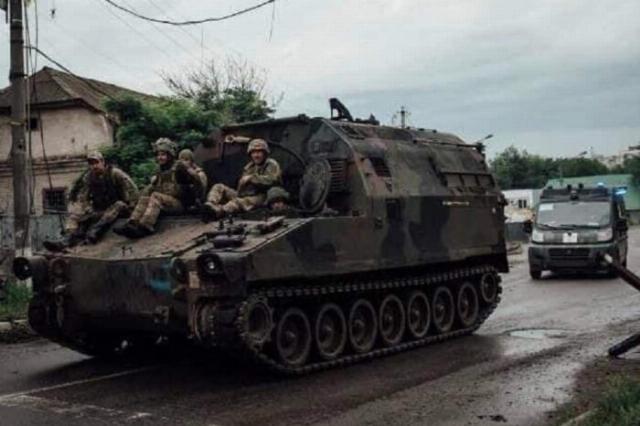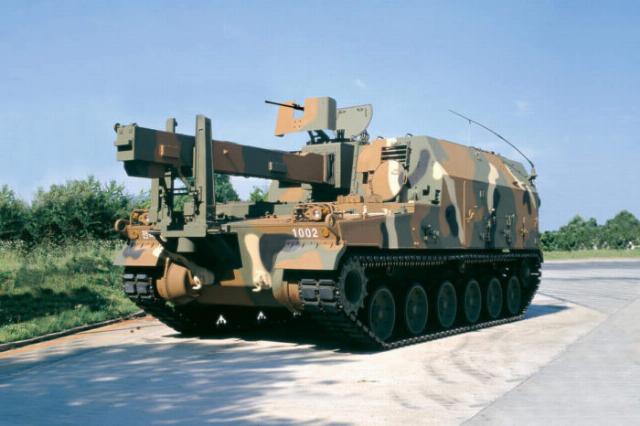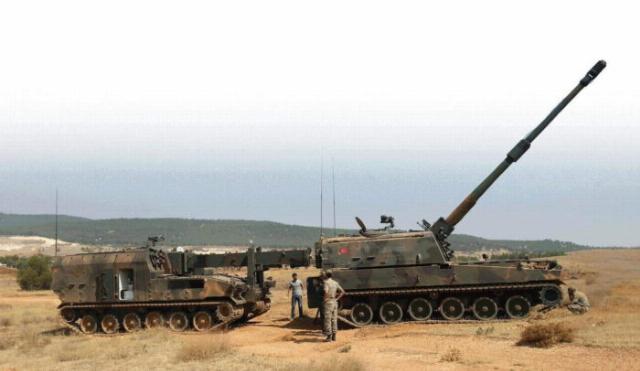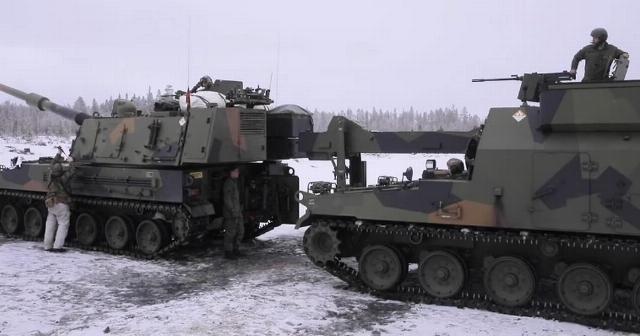Despite the abundance of materials in foreign media about the huge number of artillery shells used in Ukraine, little attention is paid to the practical side of supplying ammunition to artillery systems.
Compared to just 12 months ago, many Western countries have increased their projectile production capacity, especially 155 mm caliber, by installing additional lines or using more shifts.
However, this is only part of the puzzle. As soon as the ammunition arrives in Ukraine (usually overland via Poland), it must be transferred through the rear areas to the advanced units.
Western ammunition is partially shipped in boxes, but 155 mm shells are usually packed on a pallet or in a frame container. Propellant (older powder variants or a more modern modular charge system/MCS), and fuses are supplied separately. Among them, as in the case of ammunition, there are many different types, often coming from different sources.
Ammunition is delivered directly to a towed or self-propelled artillery installation (ACS) at a firing position, or stored on the ground near the area (place) of the proposed artillery deployment.
The first option allows you to maintain constant combat readiness of artillery units. However, some wheeled self-propelled guns used by Ukraine, as a rule, do not store shots on board in case they are hit by Russian artillery or UAV strikes, and use ammunition already placed on the ground in advance.
Several countries, including the United States, South Korea and Turkey, have developed special platforms for supplying ammunition – transport and loading vehicles (TZM). These systems allow you to feed new projectiles directly, without the crew leaving the car. They are usually based on the same type of chassis as the ACS, which provides an identical level of mobility and protection, as well as general logistics.

TZM M992 (FAASV) in Ukraine
For many years, the US Army has been using a specialized TZM for use with self–propelled artillery systems of the M109 155 mm/39 caliber series - the M992 Field Artillery Ammunition Support Vehicle (FAASV).
This system was originally developed by BMY Combat Systems as a private project called the "Ammunition Delivery System" and is usually distributed by one vehicle per M109 self-propelled gun.
The FAASV is based on the same chassis, but has a raised compartment in the rear, which usually stores 90×155 mm shells, 96 complete MCS and 104 fuzes. They are fed to the rear of the M109 via a conveyor belt.
Currently, under contract with the US Army , BAE Systems is upgrading part of the M992 fleet to the M992A3 Carrier Ammunition Tracked (CAT/Tracked Ammunition Carrier) assembly standard.
The latest contract is estimated at $493 million and placed in early August 2024. Production will last from August 2025 to July 2026.
FAASV export sales were carried out to Egypt, Saudi Arabia, Spain and Thailand.
The large internal volume of the M992 compartment means that it is suitable for a number of other combat missions, such as a command post or a fire control center. These solutions are used by Egypt, Greece and Taiwan.

Korean TZM K10 (ARV)
South Korea has supplied a large number of locally developed 155 mm K9 Thunder self-propelled guns. TZM K10 (ARV) has been developed to accompany them and supply them with ammunition. The vehicle carries a total of 104 155 mm shells and 504 MCS. The crew consists of three people.
Korean TMZ has also been ordered by other countries, including Australia (designation AS10) and Norway. The last of them was Romania, which in July 2024 signed a contract for 54 K9 and 36 TZM K10.
According to Hanwha, tests have shown that 48 155 mm shells can be loaded into K9 from K10 in less than 18 minutes. By comparison, an unprotected truck takes about 67 minutes to load the same amount of ammunition.

Turkish self-propelled guns Firtina and TZM Poyraz
Turkey has followed a similar path. Its 155-mm tracked self-propelled gun "Firtina" (Firtina), in fact, is a local version of the K9. TMZ for the supply of ammunition was developed and implemented for it. Its latest designation is TZM "Poyraz" (Poyraz). The machine is produced in a ratio of one to three "Firtins".
Turkey has a long tradition of modifying old platforms for new combat missions – the Poyraz uses components from decommissioned M48 tanks and in many ways, with a full combat weight of 50 tons, is similar to the FAASV of the US Army.
The Turkish TMZ also has a raised compartment in the rear and accommodates a total of 96 155 mm shells and charges, which are fed into the Firtina through a telescopic lever. The projectile is transferred automatically, while a semi-automatic device is said to be used to transfer the charge.
Not everyone follows this path. In the UK, VSEL proposed an ammunition supply system based on its AS90 self-propelled howitzer developed for the Royal Artillery, but this idea was not accepted. The BAE Systems Bofors Archer 155mm system in service with the Swedish army is replenished with a container mounted in the rear of the 8×8 truck chassis.
The Israel Defense Forces uses an unarmored M548 tracked transporter to support the M109 series howitzers. Currently, they are being used during the ongoing conflict in Gaza.
For towed artillery systems, unprotected trucks are usually used to transport crews and some ready-made ammunition, but some countries are switching to a fully equipped artillery fleet, since such a solution promises greater survivability.
As always, this is a compromise between capability, survivability, practicality and cost. For some armies, purchasing more modern howitzers at the expense of custom-made TZMS, when conventional trucks can do the job well enough in many circumstances, may still make the most sense.
Based on the materials of the resource shephardmedia.com

